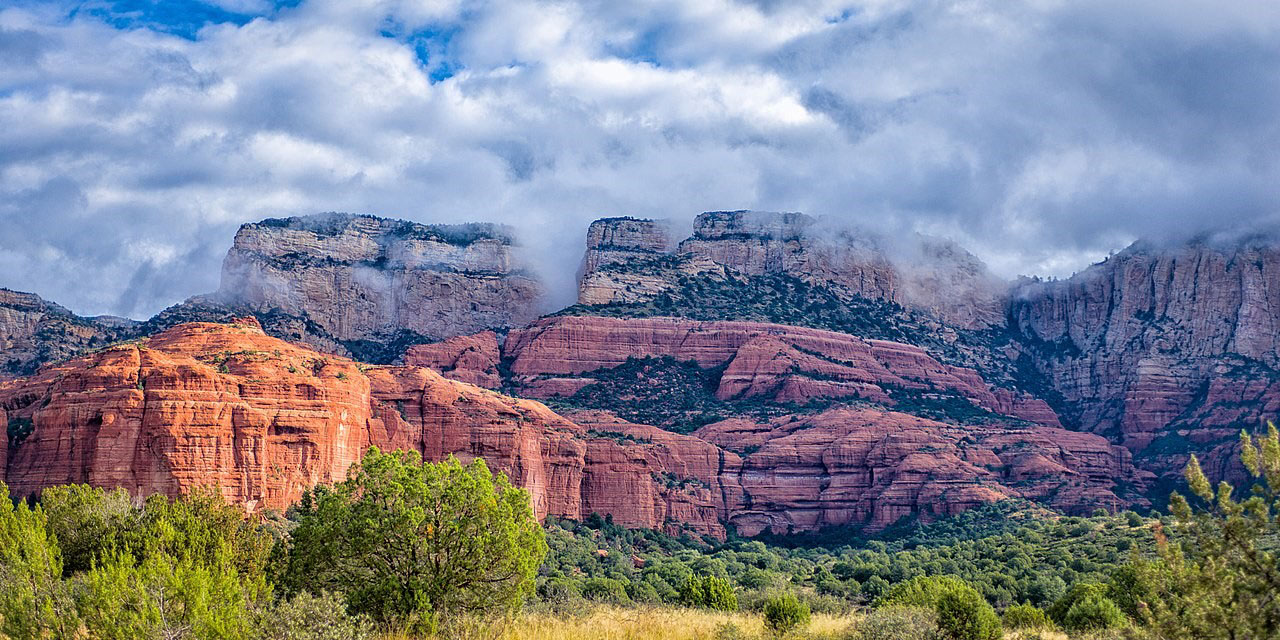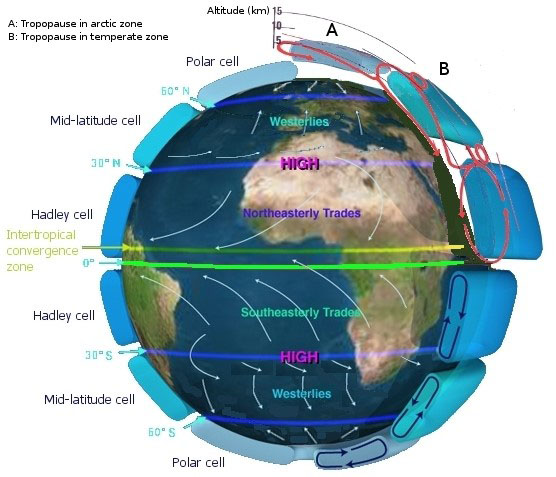
The word monsoon may conjure in your mind torrential rains. But monsoon actually comes from the Arabic mawsim—meaning not rain but season.
In the tropics, there are only two seasons, known as dry and wet monsoons. They’re brought about by equatorial winds that blow in each spring and fall—predictably enough that sailors have depended on them for centuries.
During wet monsoons, the winds bring rain in tropical places around the world, like India and Southeast Asia. But also in the subtropics—like the American Southwest, Central America, northern South America, and West Africa.
When humid monsoon winds meet highlands, like in the Tibetan plateau or the Himalayan foothills, the moist equatorial air rises and more water vapor condenses out to produce those famous torrential downpours.
The largest wet monsoon rains ever recorded happened in India in the summer of 1860, with over one thousandinches of rain.
Wet monsoons recharge many of the great rivers of the world, providing water for millions of people and their agriculture.
But they can also produce devastating floods and cropland erosion and bring water- and insect-borne diseases.
Dry monsoons provide a welcome relief from the rains but sometimes cause drought.
These hardships aside, the wet–dry monsoon cycle is essential to life in the tropics.
Background
Synopsis: Monsoons are tropical and subtropical seasons caused by shifts in wind patterns that bring dramatic changes to regional weather, ranging from droughts to floods. For centuries, mariners have relied upon these large-scale wind shifts for navigation; however, regional conditions influence their characteristics each year.
- Temperate areas, like most of the United States, have four seasons, but tropical and subtropical areas have only two seasons, known as wet and dry monsoons.
- Monsoon comes from the Arabic word for season, mawsim.
- Monsoons are seasonal wind shifts that drive weather and last for several months in tropical and subtropical regions.
- Tropical regions are defined as the area between the Tropic of Cancer at 23.5°N and the Tropic of Capricorn at 23.5°S, while subtropical regions extend poleward to 35° north and south latitude.
- Earth’s strongest monsoon rains occur in India and Southeast Asia, but these seasonal shifts also occur in southern North America, Central America, northern South America, and West Africa.

- On a global basis, wind shifts are caused by the annual south to north migration of the Inter Tropical Convergence Zone (ITCZ) as Earth’s axial tilt exposes the Southern Hemisphere to summer sun from December to February, shifting northward as the Northern Hemisphere turns to face the sun from June to August.
- The ITCZ is caused by hot air near the equator rising to create low pressure.
- The air cools and drops back toward Earth at about 30° north and south latitude creating a cell of circulating air known as a Hadley cell.
- Earth’s rotation causes winds in the Hadley cell to be deflected toward the Southwest as the northeasterly trade winds in the Northern Hemisphere and toward the Northwest as the southeasterly trade winds in the Southern Hemisphere.
- Each year Earth’s axial tilt causes the ITCZ to migrate southward into the Southern Hemisphere summer from December to February and northward into the Northern Hemisphere summer from June to August.
- North of the ITCZ winds blow from the northeast, while south of the ITCZ winds blow from the southeast, so migration of the ITCZ results in the global wind shifts that drive annual monsoon rains as they encounter coastlines.
- Mariners have used these dependable wind shifts for centuries to optimize their voyages.

- Wet summer monsoons are characterized by onshore winds that bring annual rainstorms that often result in floods but bring needed water to a region.
- Wet monsoons are accentuated in coastal areas because land heats faster than water, warming the air above it.
- As the heated air rises above the landmass, it creates lower pressure that pulls more cool moist ocean air landward.
- As the ocean air encounters topography, it is lifted higher into the atmosphere, cooling and dropping its moisture as rain, since cooler air holds less water vapor than warmer air.
- The extraordinary elevations of the Tibetan Plateau and Himalayas increase the severity of Asian monsoons compared to other regional monsoons.
- The highest rainfall recorded in a single monsoon season was 1,047 inches (87.25 feet or 26.47 meters) in the southern summer of 1860–1861 in the northeastern Indian state of Meghalaya, India.

- Dry winter monsoons occur when winds blow from the parched continent toward the sea.
- Warmer landmasses cause increased evaporation, resulting in drier offshore directed winds that lead to drought conditions.
- While less dramatic than its Asian counterpart, the North American monsoon brings welcome rainfall from the Pacific Ocean and Gulf of Mexico to northern Mexico, New Mexico, Arizona and parts of Utah, Colorado, Southern California and Baja, Mexico.
- The monsoon in southwestern North America starts in May and June, peaks in July and August and dissipates in September and October.
- The strength of the North American monsoon depends upon El Niño and other climate effects.
- For the billions of people living in the tropics and subtropics, monsoon rains are both essential and potentially disastrous. It is a fine balance.
- Annual monsoon rains are especially important for agriculture and energy production via hydroelectric plants.
- However, if rains are too strong, they can erode crops and flood cities, bringing water- and insect-borne diseases and crippling water systems that are unable to handle the floodwater sediment load.


